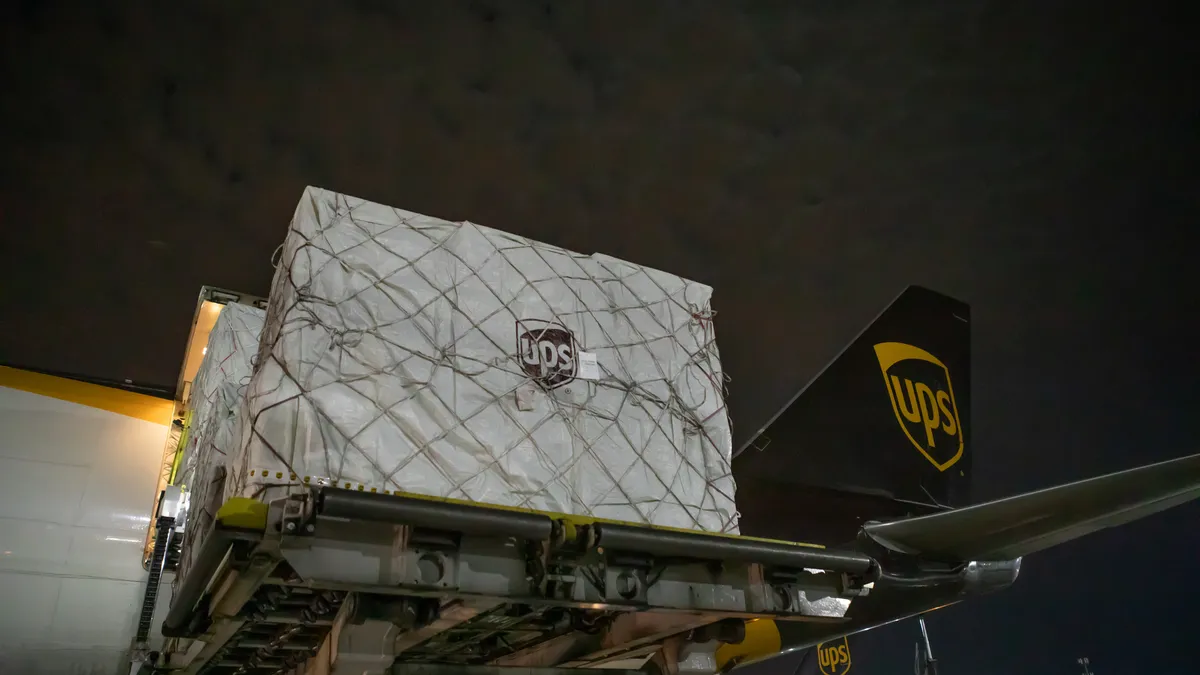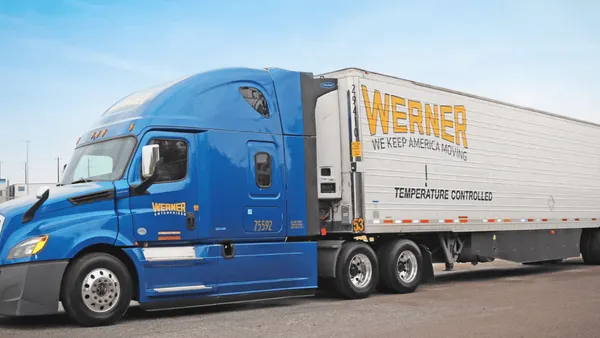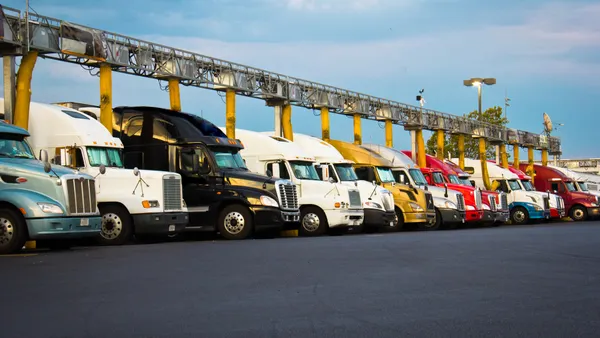Dive Brief:
- UPS saw a 16.5% YoY revenue increase for its supply chain and freight segment in Q3, driven by an increase in Asian freight forwarding, the carrier said in a Wednesday earnings call.
- Profit for the segment was up 18% YoY, and at $302 million, was a record for a third quarter, said Brian Newman, UPS CFO. Elevated demand and tight capacity led to the profits, said Newman, speaking to analysts. The one potential downside for the segment was a slowing demand for personal protective equipment, but that was offset by inventory replenishment, Newman said.
- UPS' TL brokerage unit "had a negative impact of profit on a year-over-year basis due to continued market challenges," Newman said. But UPS LTL revenue per hundredweight increased 7.2% YoY, Newman said. Newman said UPS rose to the challenge of meeting customer needs in the face of increasing volumes, tight capacity and flat U.S. industrial performance.
Dive Insight:
UPS' supply chain and freight segment financials improved in Q3, after Q2's weak demand in UPS' LTL and TL brokerage units.
In Q2, freight revenue fell nearly 16% YoY, as the overall segment's revenue rose 8.5%. And Newman said in July that LTL and TL brokerage "faced excess capacity" early in Q2, with both markets seeing recovery later in Q2.
But that was a quarter with a more pronounced effect from the COVID-19 pandemic. Q3 showed recovery from the shutdowns that marked the initial onset of COVID-19. The company reported average daily volume increasing 13.8%, with growth across all segments and continued elevated residential demand for parcel and package delivery.
Newman did not expand on why UPS' TL brokerage had a poor Q3 performance, especially given the higher demand for TL services that other carriers are reporting in the same period. On Oct. 21, Knight-Swift, the nation's largest TL carrier, reported a booming freight market and cost controls caused Q3 revenues and net income to surpass Q3 2019 numbers, a sign that the TL sector has turned the corner and put the pandemic shutdown woes behind it.
But the nicks from TL business did not hurt the overall UPS freight business or companywide performance. UPS revenues went up 15.9% YoY, with net income up 11.8%. The company generated $1.96 billion in net income in Q3, and CEO Carol Tomé said demand could rise even higher in the next year, driven by fast-growing global volumes and small-and-medium-sized businesses.
Still, Tomé said she has an eye on containing costs. UPS will scrutinize capital spending in 2021 as part of an effort to decrease core operating expenses, she said.
"You should expect our 2021 capital spending to be significantly lower from what we are spending in 2020," said Tomé.












